Create Mapping on a Configuration
Mappings describe how to link the Source Fields to the Target Fields. Each mapping can contain an aggregation strategy, conditionals, and a default-value.
-
Aggregation Strategy — Allows applying window functions over a mapping that lets the values aggregate when the Target Records get created. Refer to Window Functions | Snowflake Documentation
 .
.Possible values: ['MAX', 'MIN', 'SUM', 'AVG', 'LISTAGG']
-
Can be applied over a window of source field values by supplying a list of source fields.
-
The LISTAGG aggregation function requires an additional Separator parameter.
-
-
Conditionals — List of conditions that allow mapping multiple source field to a single target field provided the conditions. Each condition contains field 1, field 2, an operator, and a value. The conditions are iterated in order, and the value from the first true condition is taken on. Each condition is evaluated as: {field 1} {operator} {field 2}.
-
Default-value — If no condition is true, it falls to the default-value. If no default value is specified, the value is Null.
Complete the following steps to create a mapping on a configuration:
-
Select GT-Connector from the Gotransverse application menu
 .
.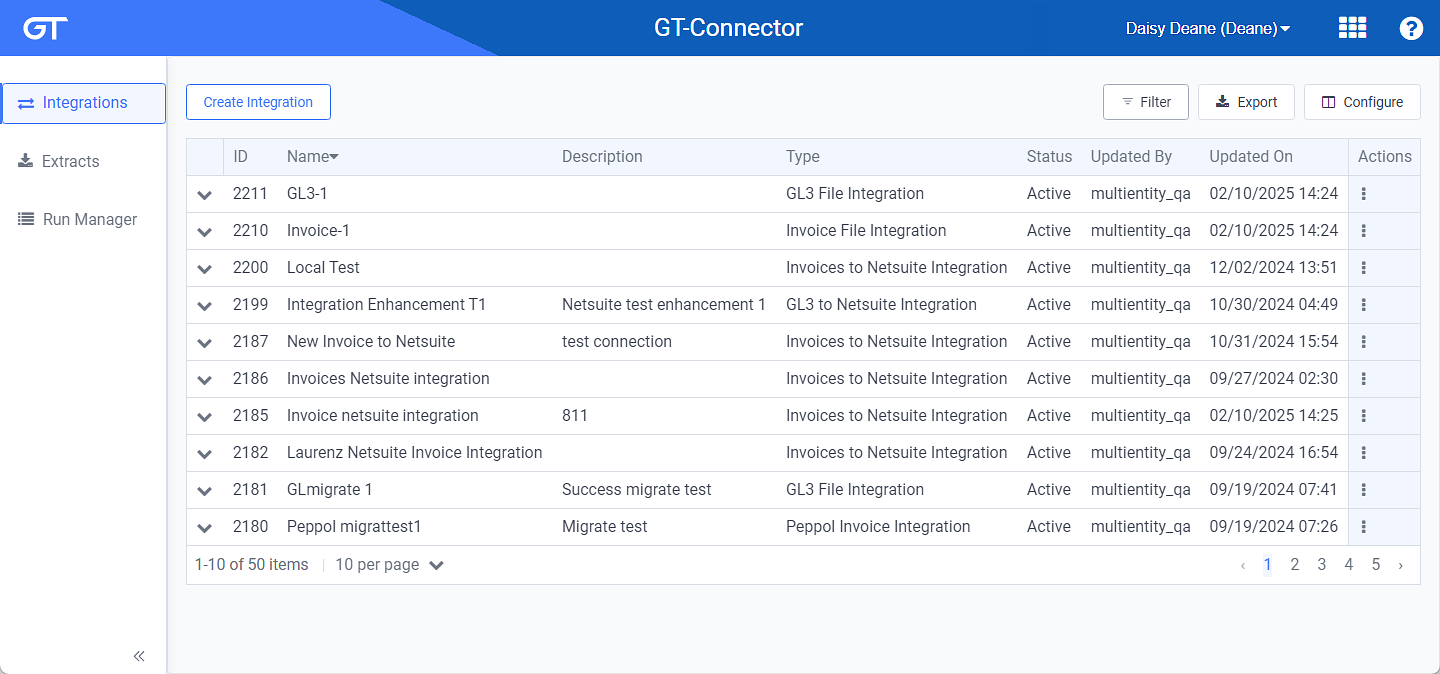
Integrations Window
Click the
 icon in the left pane to hide it. Click the
icon in the left pane to hide it. Click the  icon to open it.
icon to open it.You can manage which columns display in any table with a Configure or Columns button by clicking the button and selecting desired columns. In addition. If the table includes a Filter button, you can filter the table contents. If the table includes an Export button, you can export visible table contents (up to 50) to a CSV (comma-separated values) file. Refer to Data Tables for more information about using these features.
-
Click an integration name to open an Integration Details window.
Use the breadcrumb links to return to a previous window.
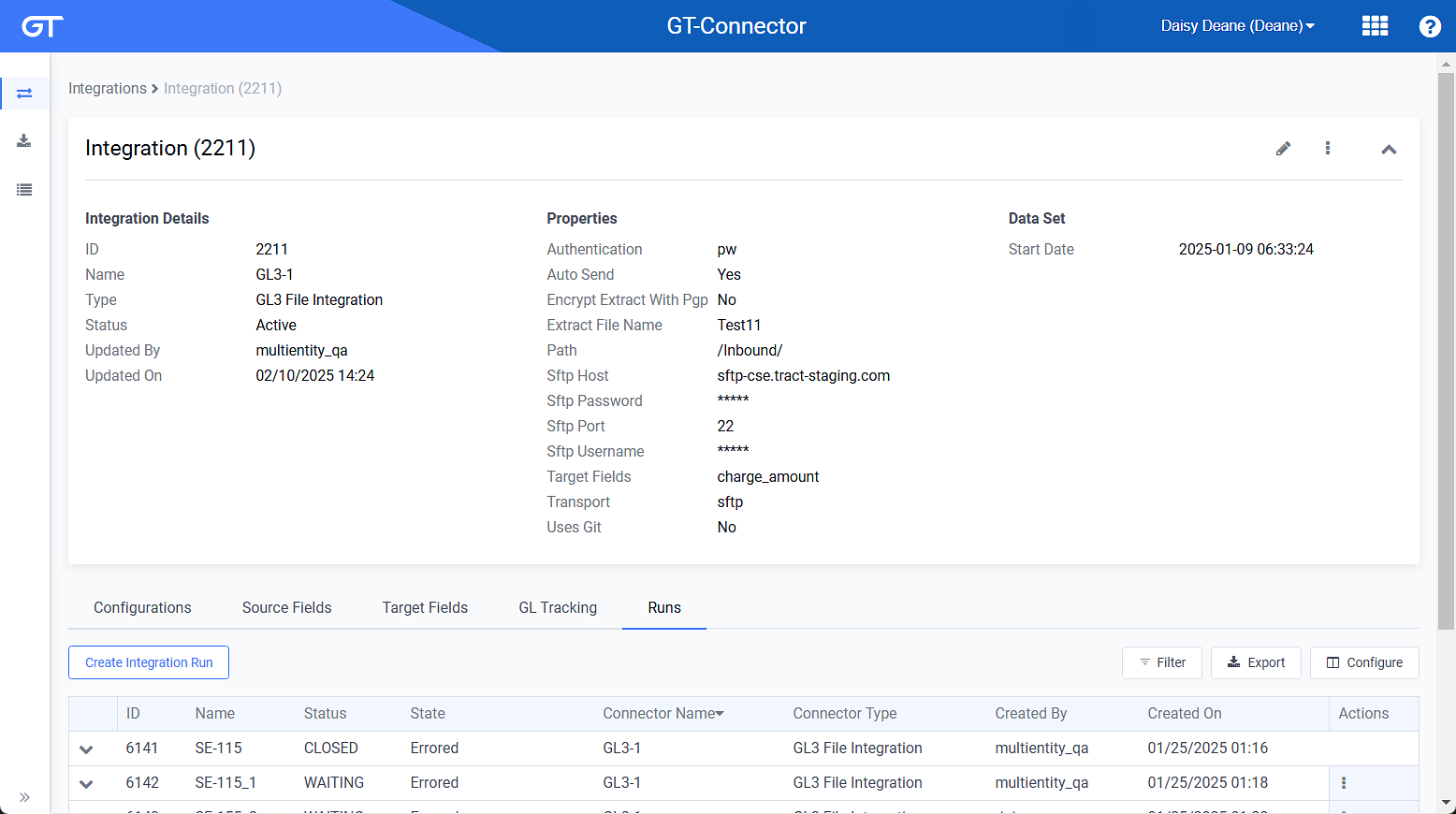
Integration Details Window
-
On the Integration Details window, click name of the configuration listed under the Configurations detail tab to open the Configuration Details window.
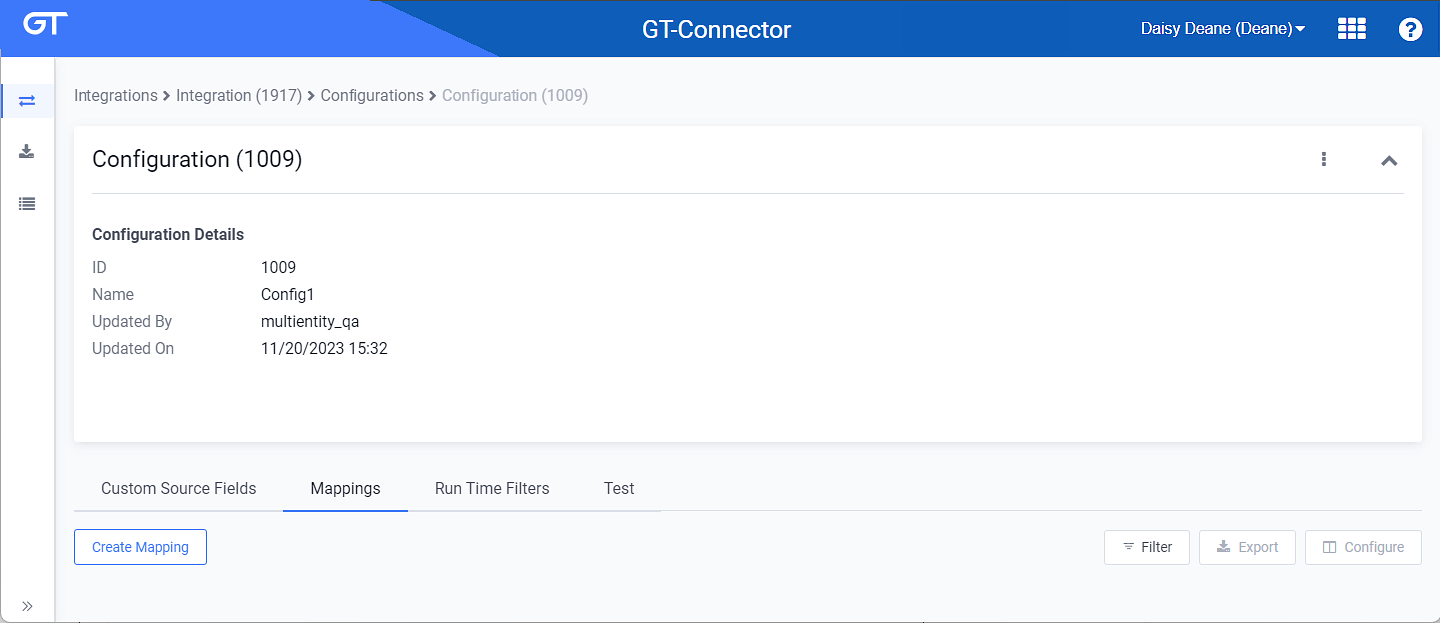
Configurations Details Window
-
On the Integration Details window, click the Create Mapping button under the Mappings detail tab to open the Create Mapping window.
-
On the Create Mapping window, enter the required and relevant information:
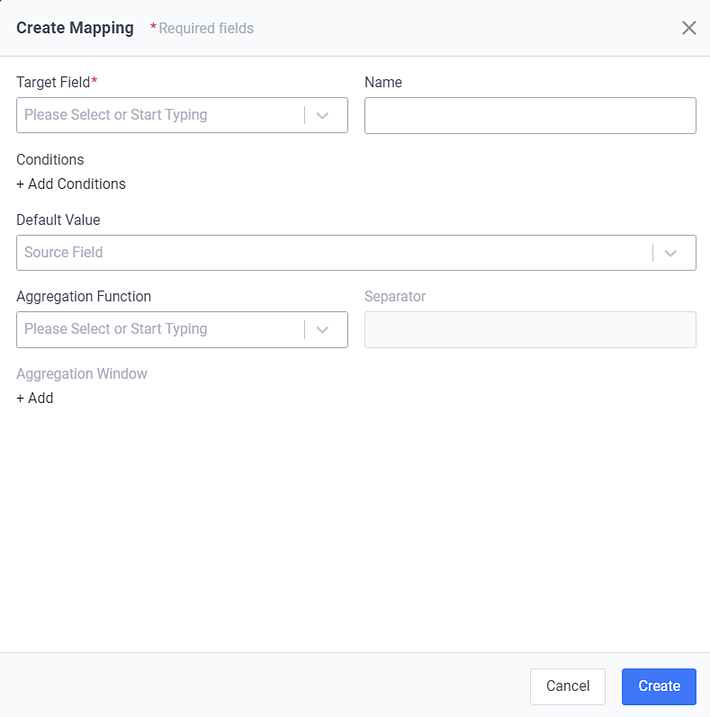
Create Mapping Window
Required fields are marked with an asterisk.
-
Target Field* — Select a target field from the drop-down list.
-
Name — Enter a name for the target field.
-
Add Conditions — Click to add conditions to map multiple source fields to a single target field. Select a Source Field, Operator, second Source Field, and a Value for each condition.
Click the
 icon to delete a condition.
icon to delete a condition.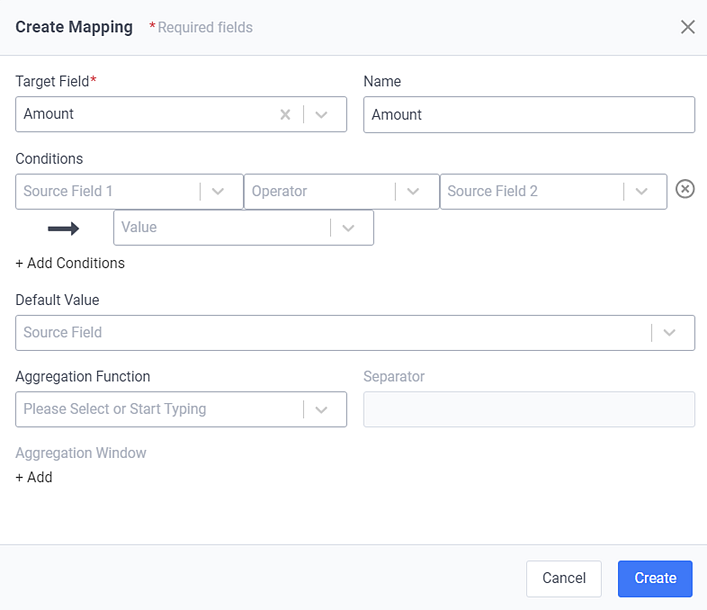
Conditions Fields
-
Default Value — Select a source field from the drop-down list to use as the default value in the event that the condition(s) is false.
The data type for the source fields selected as Default Value must match the data type of the Value selected for all conditions added in the Conditions section. If they do not match, an error message will display, and you will not be able to create the mapping.
-
Aggregation Function — Select a function from the drop-down list. Options include:
-
MAX
-
MIN
-
SUM
-
AVG
-
LISTAGG
-
COUNT
-
-
Separator* (only for LISTAGG) — Enter a separator value, such as a dash (-) or semicolon (:).
-
Aggregation Window — Click Add to apply the Aggregation Strategy over one or more source fields. During aggregation, the aggregation strategy determines if conflicting values of this target field across rows can be resolved in favor of aggregation.
-
Select a Source Field from the drop-down list.
-
Click Add to select additional Source Fields.
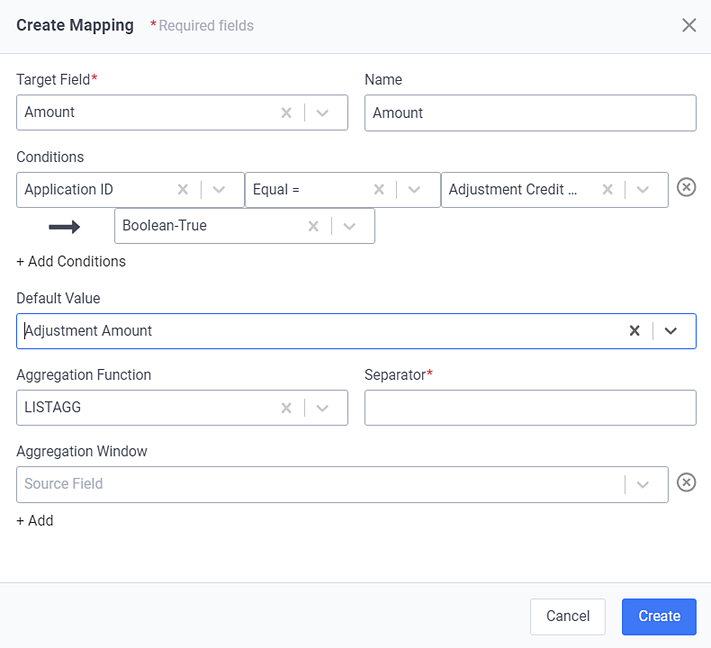
Aggregation Window Fields
-
-
-
Click Create to create the mapping. The mapping is listed under the Mappings detail tab. You can edit or delete the mapping from this table. Refer to Edit Mapping on a Configuration and Delete Mapping from a Configuration for more information.
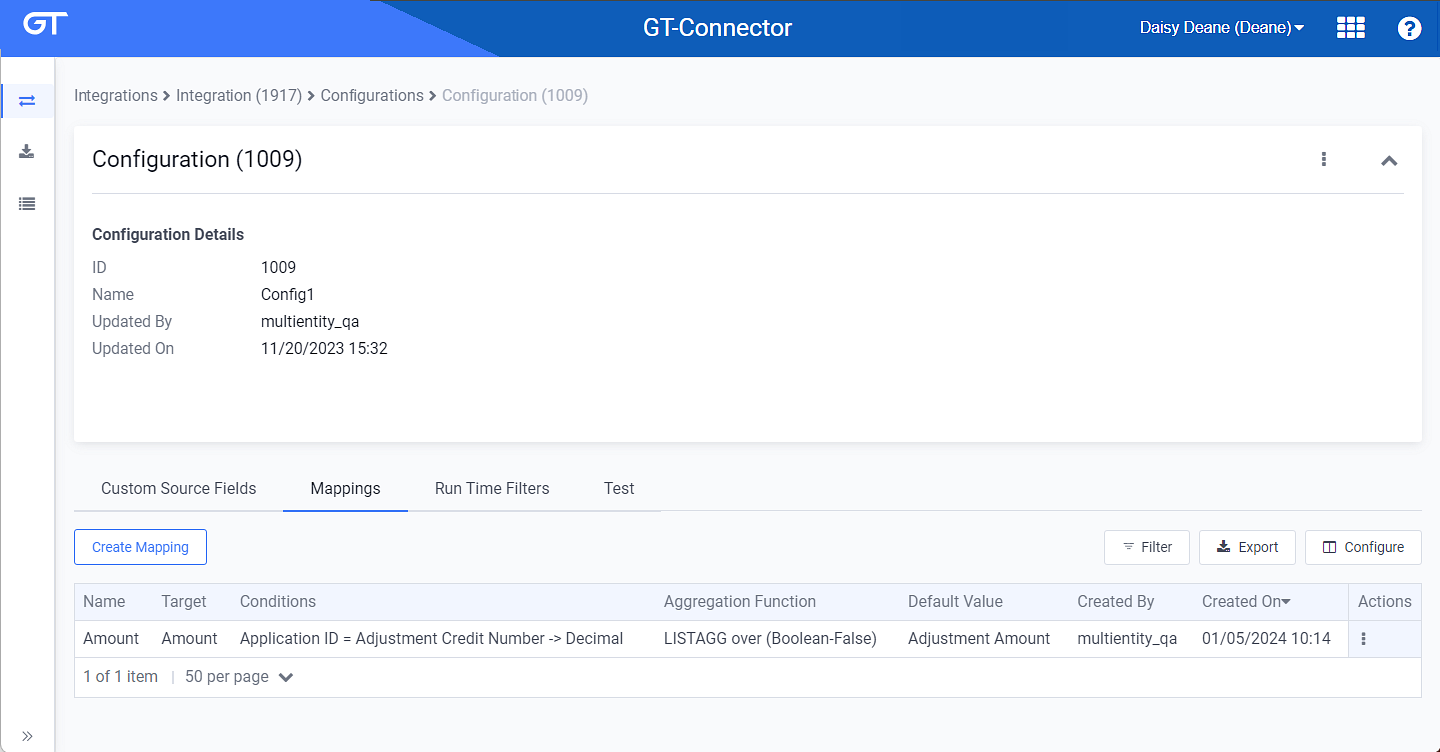
Mappings Detail Tab Table of Mappings
Topic updated: 12/2023.